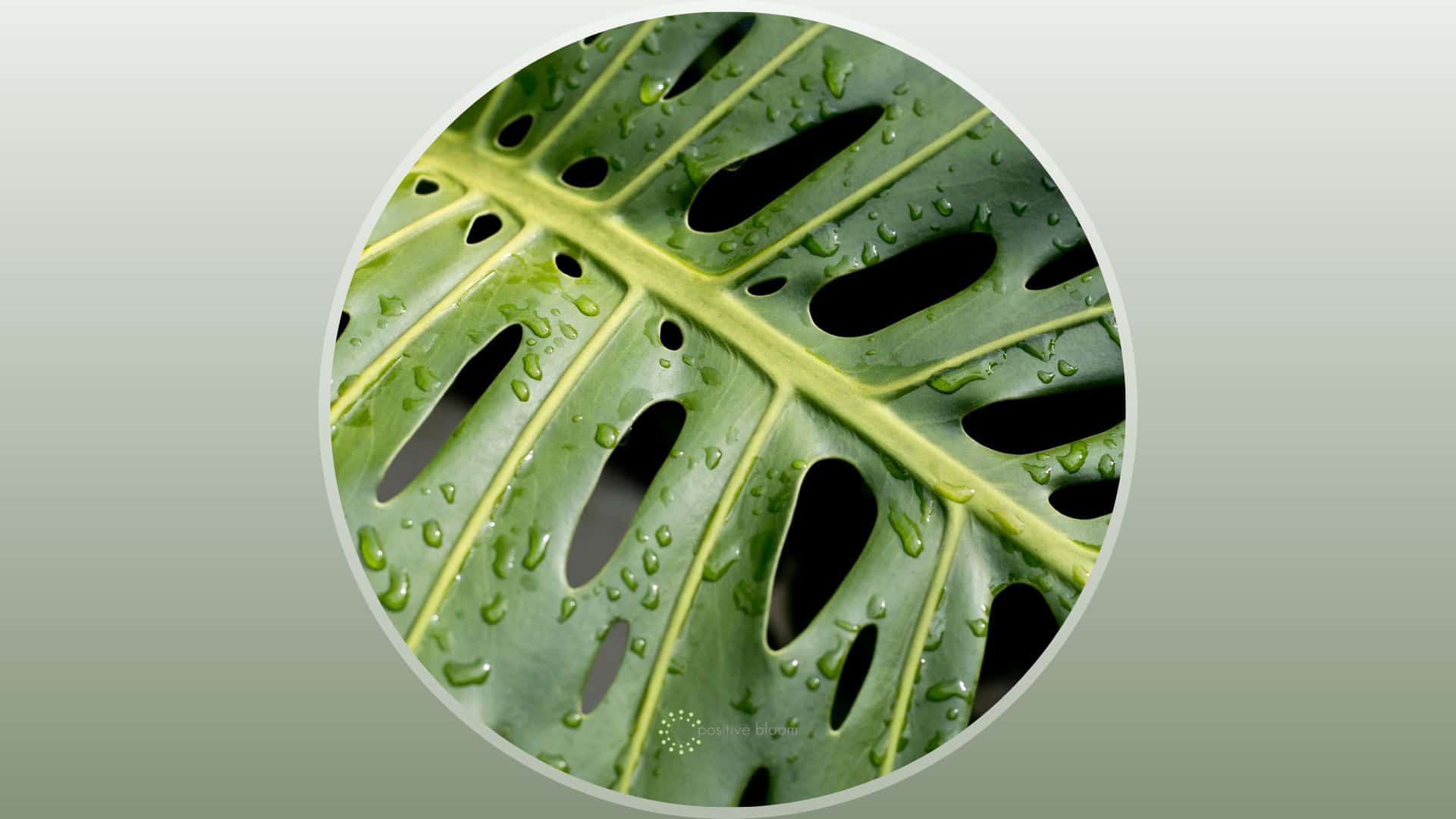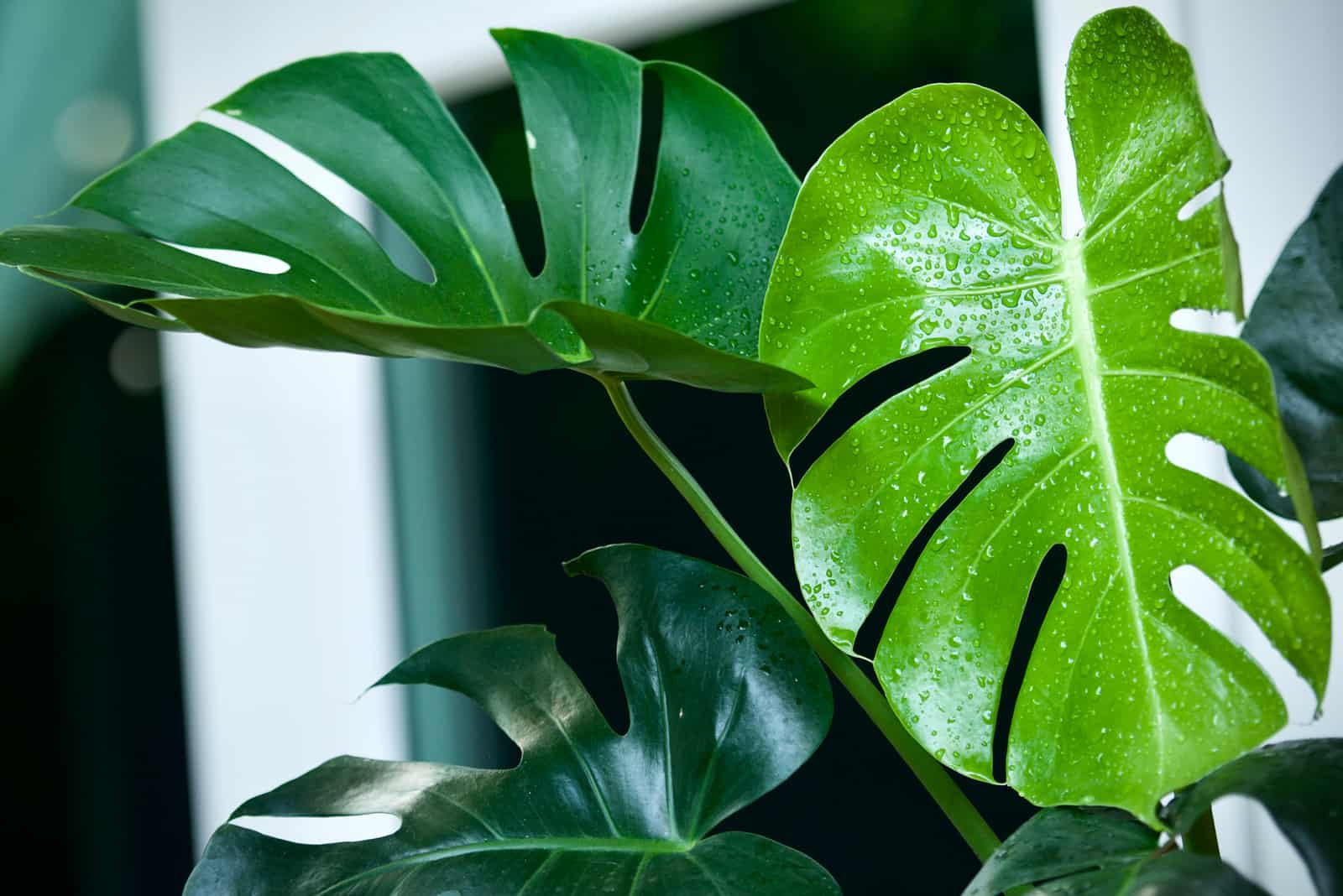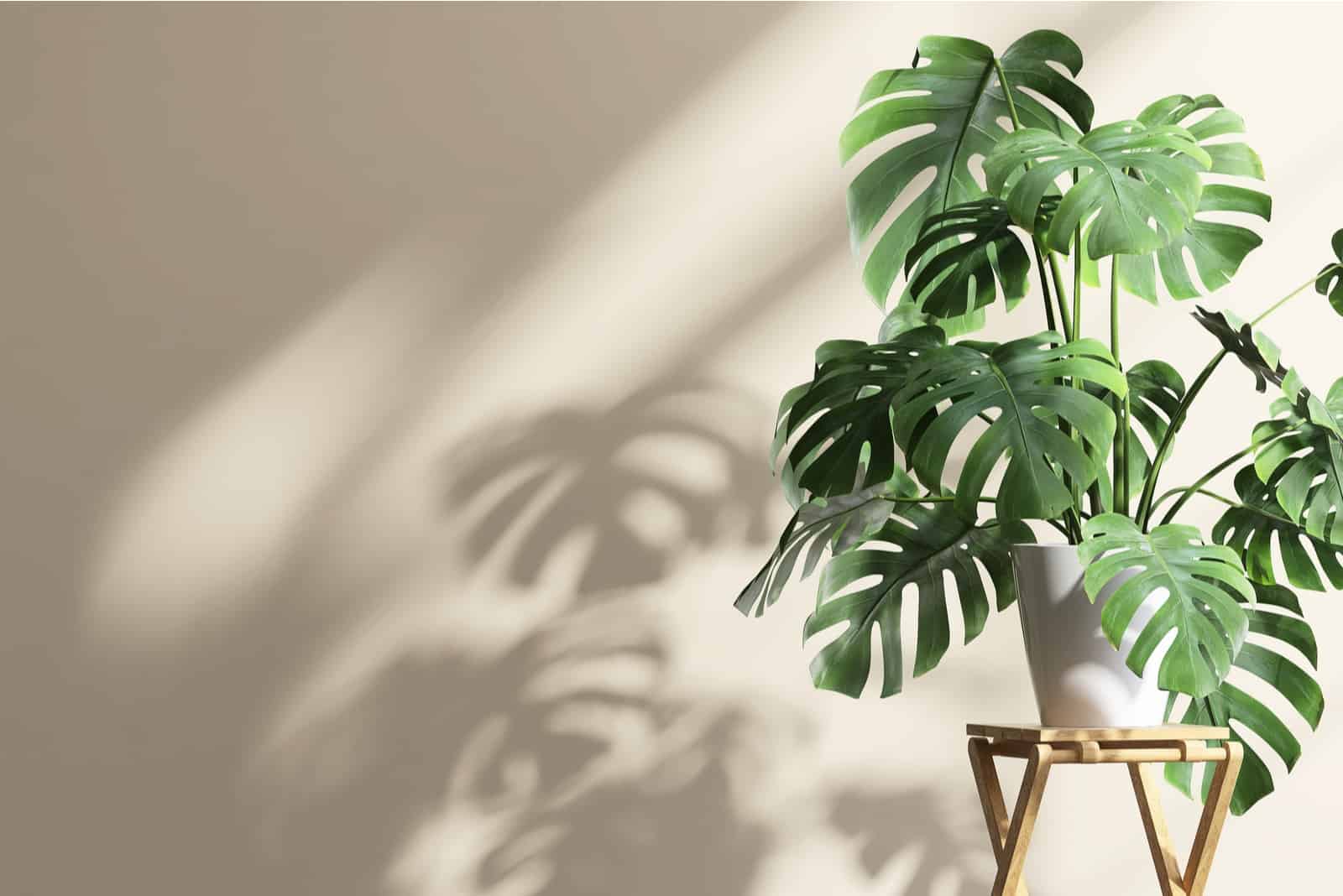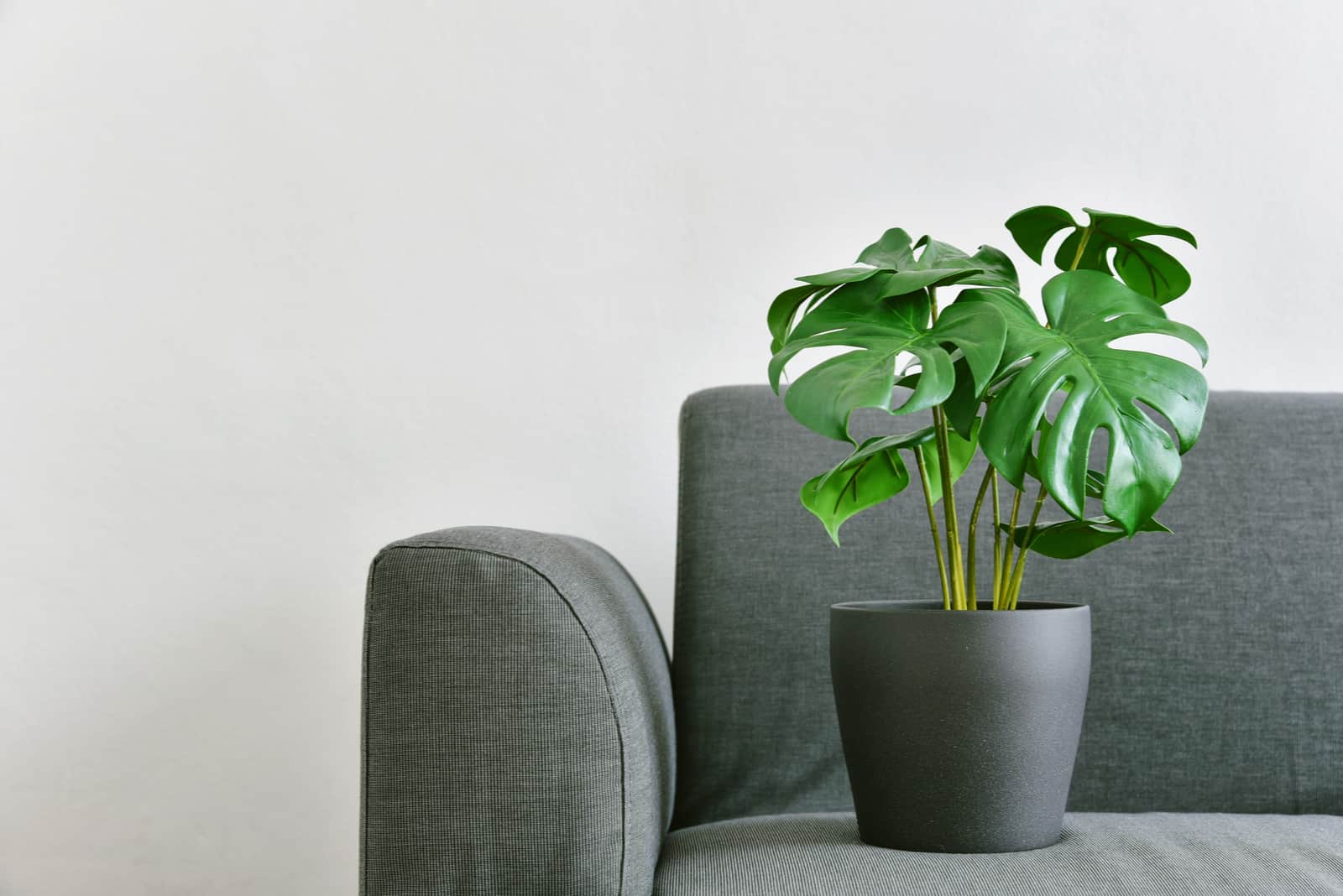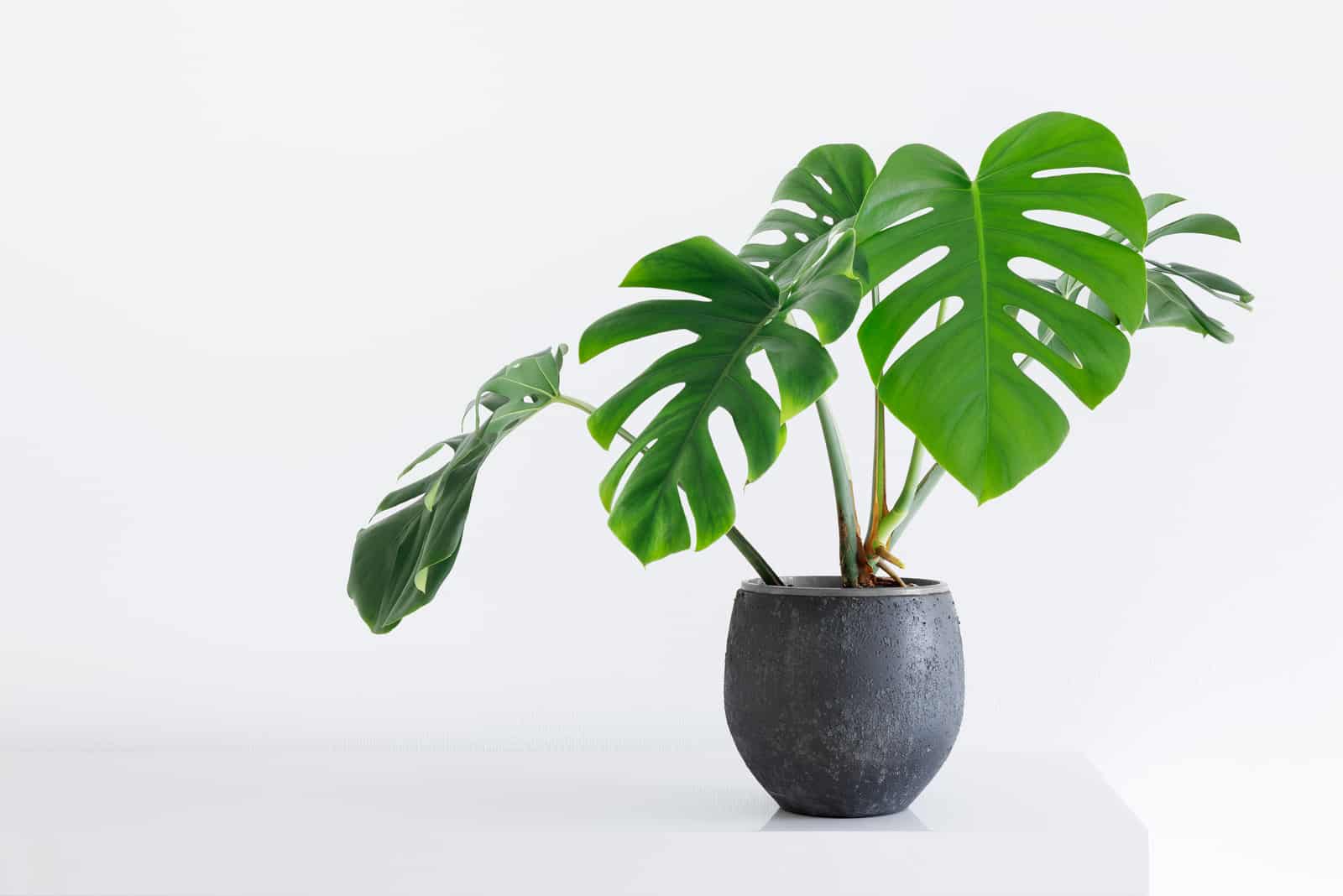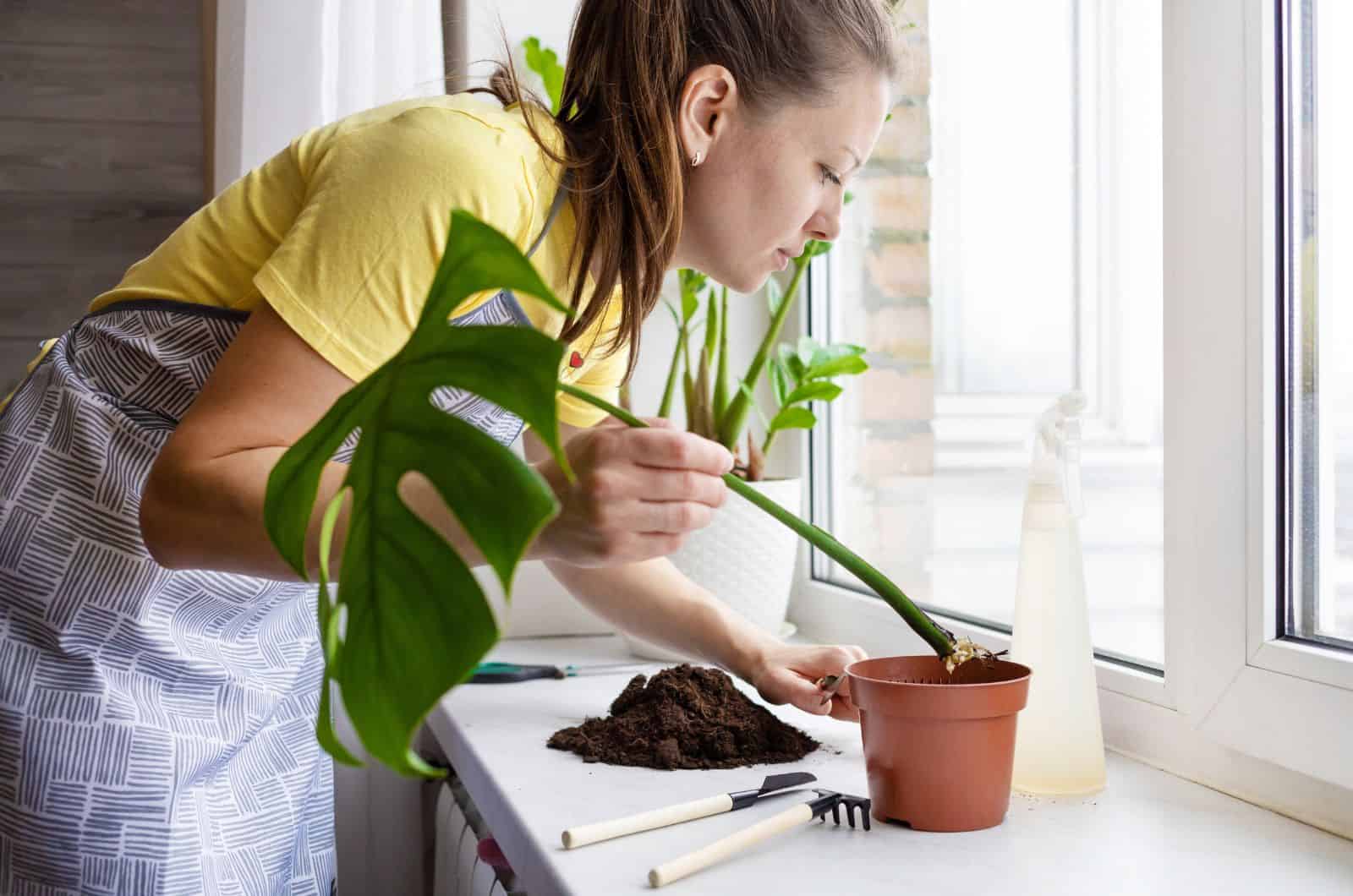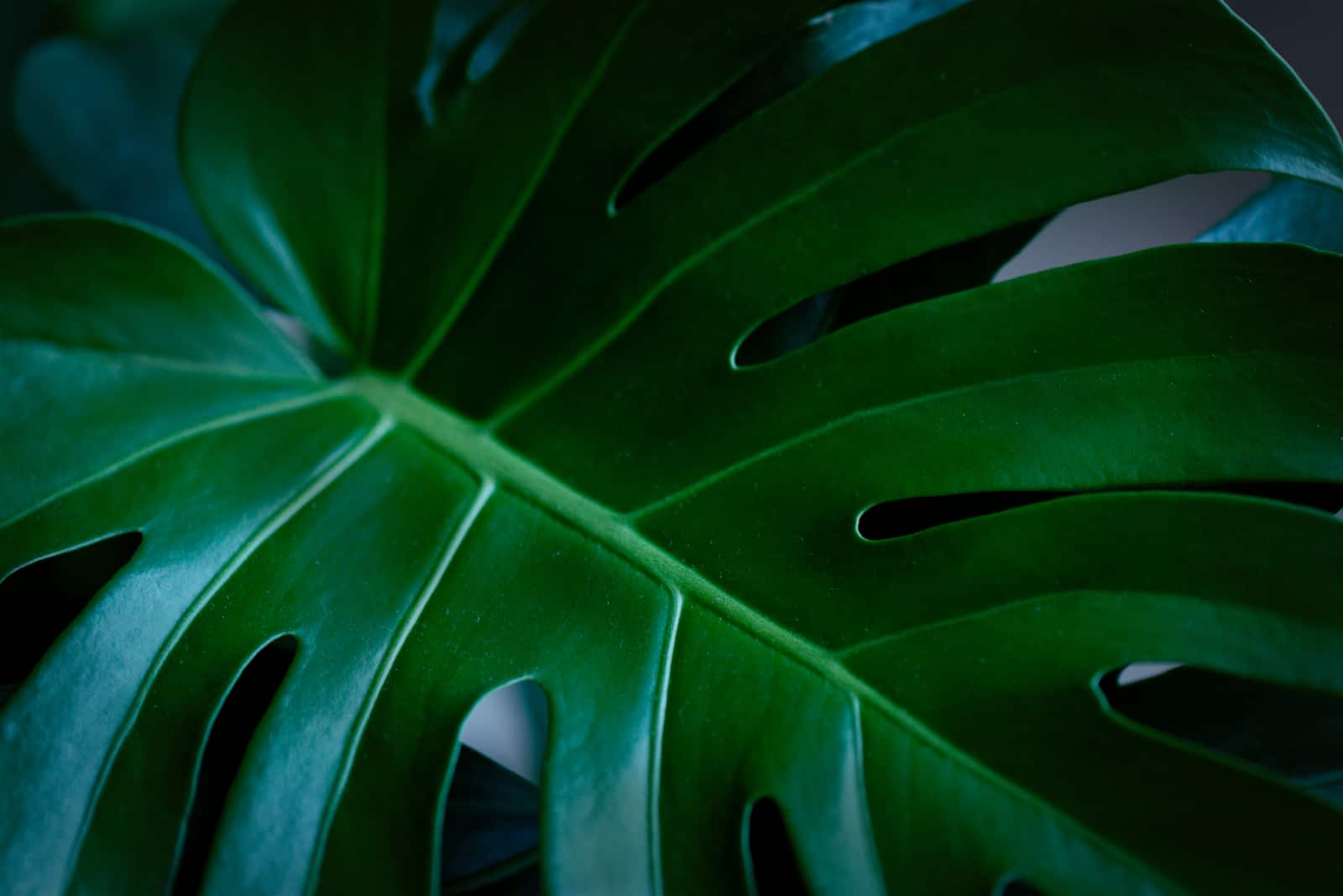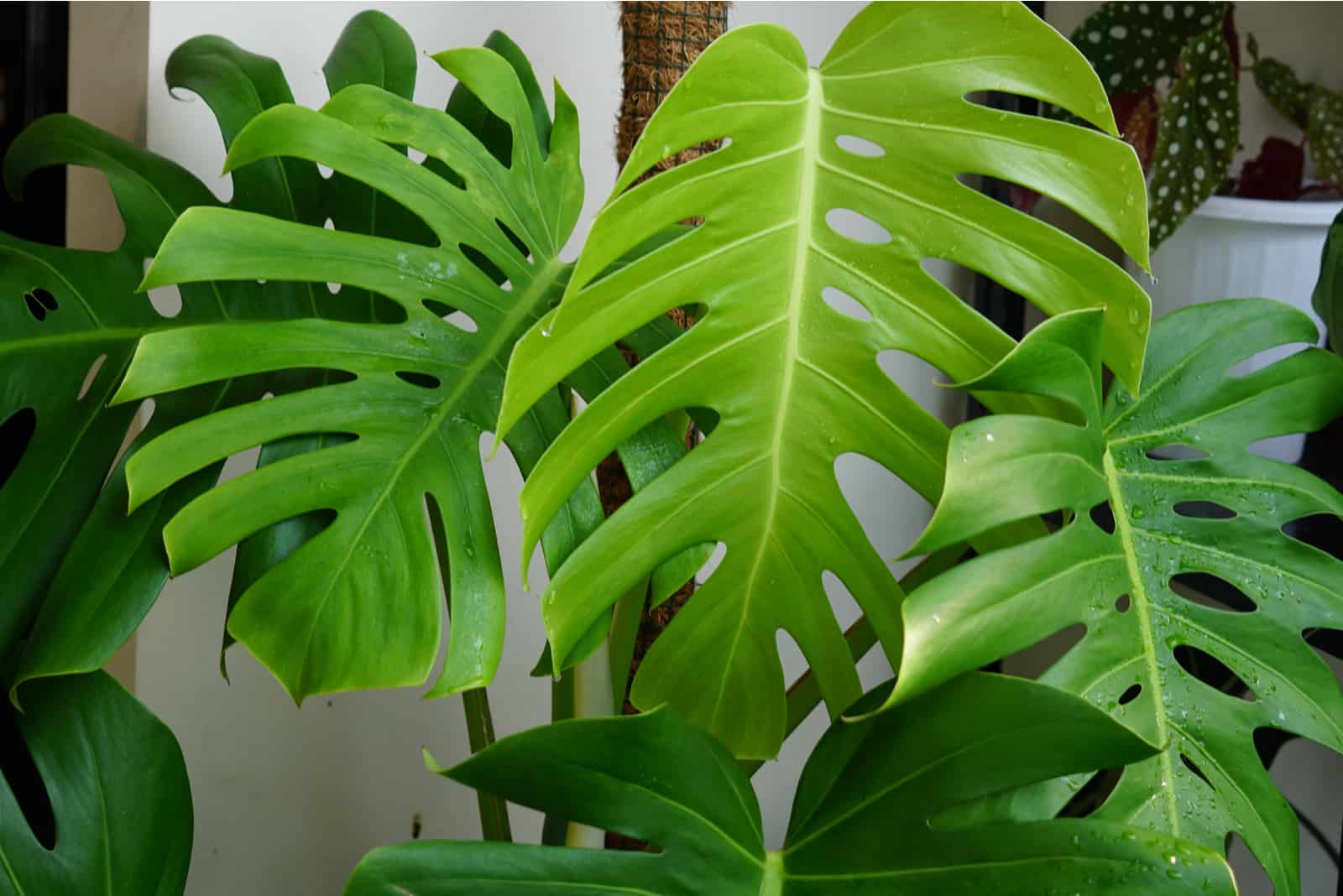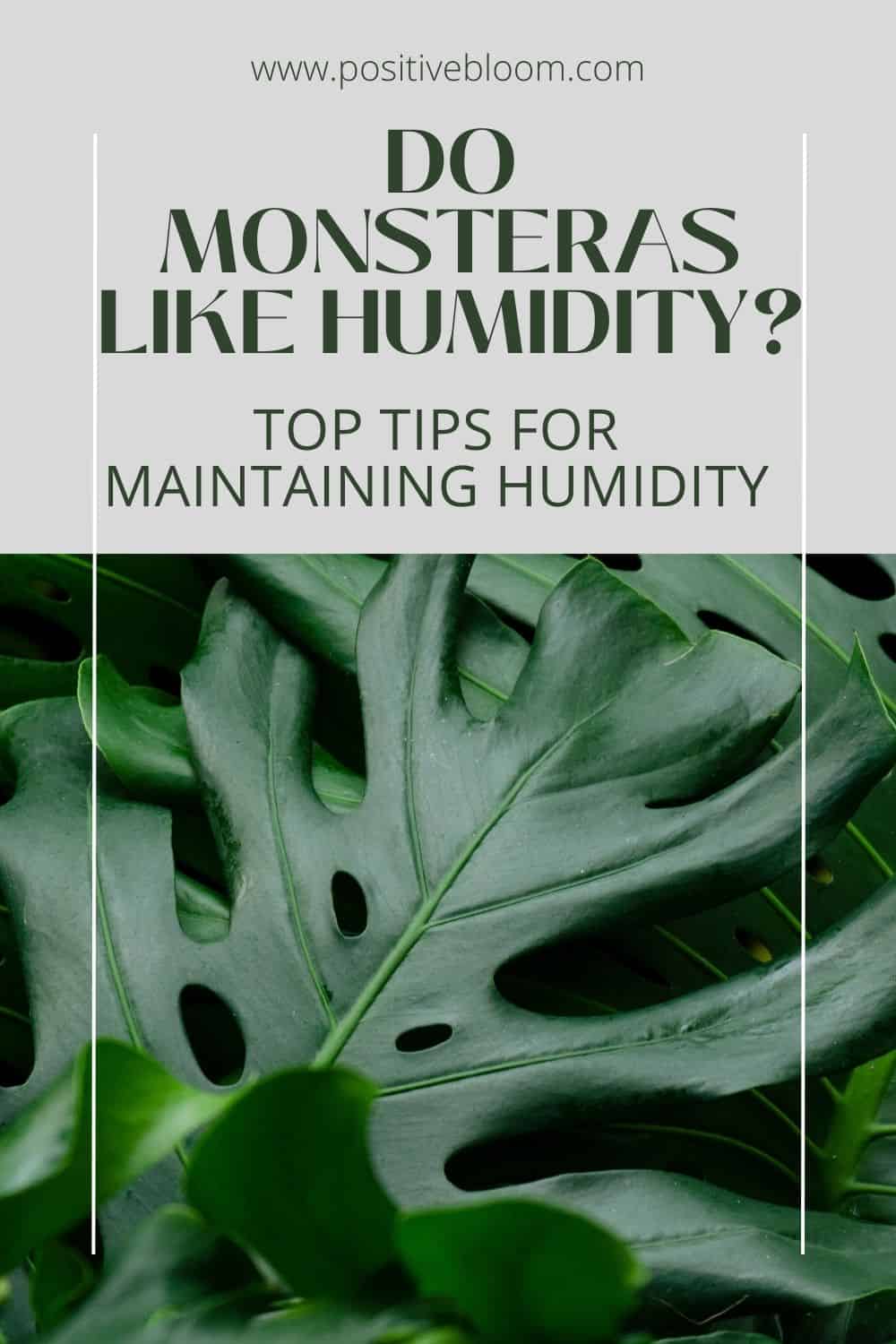And the award for the most popular houseplant of all time goes to… the Monstera plant! These plants really deserve their high status in the plant world due to their unique appearance and low growing requirements.
But it’s also really important to understand the origin of these plants and how to make them happy indoors.
Humidity plays one of the major roles in a Monstera’s development. In this article, I’ll answer the question: Do Monsteras like humidity?
I’ll also show you some methods to measure humidity and increase it if needed.
Another essential thing to understand is recognizing if your Monstera is struggling with incorrect humidity levels.
If you want to know the answers to these questions, keep reading to find out all that and more!
Do Monsteras Like Humidity?
There’s only one answer to the question: Do Monsteras like humidity? And it’s YES. These fascinating plants enjoy humidity levels over 60%.
There’s a logical explanation for such requirements. All Monsteras, including the Philodendron Monstera, Monstera acuminata, Monstera standleyana, and Monstera acacoyaguensis, are native to tropical regions.
Humidity levels in these regions are way higher than those in our houses. Growers often struggle with providing high humidity for their precious houseplants.
Sometimes, our plants display changes in appearance due to low humidity levels.
The first step you should take if you plan to grow Monsteras, or think they might have humidity issues, is to measure the humidity in your home.
How To Measure Humidity
I’ll show you a great DIY method and also tell you more about a device intended for this exact purpose.
Hygrometer
A hygrometer is a special device that monitors the relative humidity in a given environment. Interestingly, the way this device works isn’t rocket science. It just measures the amount of vapor in the surrounding area.
Temperatures significantly affect humidity, which is why almost all hygrometers also have integrated thermometers.
If you are unsure how to use these devices, follow the steps below.
1. If you decide on wall-mounted hygrometers, it would be best if you put them in the middle of the room to get the most accurate results.
2. Wait a few minutes after you turn on the device so that it can calibrate. Turn on the humidity mode.
3. Check the reading every 2 to 3 hours.
Another type of hygrometer available on the market is a hand-carry hygrometer, unlike the wall-mounted, hand-carry device that measures the relative humidity of a larger place.
Here’s a visual representation of how to read a hygrometer:
Ice Cube Method
I assume you are thinking right now, how on earth can ice cubes measure humidity?! Of course, it won’t ‘show’ you the percentage of relative humidity, nor will it be as accurate as a digital hygrometer. Still, it can help you determine if the air is dry.
All you need to do is prepare a glass/jar of water and some ice cubes. Take water and ice cubes to the area where you want to check humidity levels, preferably in the room with your Monstera.
Add some ice cubes to the water and place the glass where you want to measure the amount of moisture.
Leave it for a few minutes and then come back and ‘read’ the results. A high amount of condensation outside the glass indicates higher levels of humidity.
In contrast, the surrounding air is very dry if there’s no condensation outside the glass.
Once more, this is only a useful technique for preliminary testing.
Signs Your Monstera Needs Higher Humidity Levels
Growers often don’t check humidity requiremnts before getting a plant. Checking the plant’s requirements before you start growing is essential, as that’s the only way to keep your plant happy, healthy, and alive.
Monsteras are native to tropical regions and require a lot of humidity to thrive. When unhappy with humidity levels, these plants will display various changes in appearance.
Here are the 5 most common signs of lack of humidity in Monstera plants.
1. Crispy leaves: If Monstera leaves become fragile, dry, and break when touched, you may be dealing with a lack of humidity. Crispy leaves frequently occur if your Monstera is underwatered. You’ll need to check both soil moisture content and humidity levels in this case.
2. Brown edges: Another telltale sign your Monstera deliciosa or any other species lacks humidity is browning of the leaf margins.
3. Wilting and drooping: Wilting and drooping often occur due to a lack of humidity. If you notice these signs, you need to check the humidity and the amount of water in the growing medium.
4. Yellowing: Low humidity can be one of the reasons your Monstera is turning yellow.
If you recognize these signs in your Monstera plant, it’s time to fix the humidity.
5. Leaves don’t unfurl: If the leaves of your Monstera don’t unfurl, you might want to check the humidity level because that’s one of the primary reasons the leaves don’t unfurl.
How To Increase Humidity Levels For Monsteras
Lack of humidity in plants may result in severe damage, so you must increase it to save your plant and avoid additional issues.
I’ll show you how to raise humidity using some great DIY methods, and I’ll also tell you more about a device that can help you increase humidity.
Let’s get started!
Use A Humidifier
The first way to increase humidity is with a humidifier. This is actually the safest and most accurate method for increasing humidity. You can choose between two types: warm and cool mist humidifiers.
Additionally, most of these devices can monitor humidity levels. This means you don’t need to care for humidity at all after installing the device.
This method has two drawbacks. The first one, as always, is the price. Electronic devices can be pricey, and humidifiers aren’t an exception.
The second drawback is maintenance. We’re all aware that no matter how high-quality the device is, it’ll need a spare part now and then.
If you have more experience in gardening or love a challenge, below are some methods that can help you increase humidity with little to no effort. They’re also cost-effective.
Misting
Many gardeners use misting to increase humidity for tropical plants. If the humidity level of the room where you grow your Monstera is slightly lower than required, misting can help you.
What does this mean? Well, if the indoor humidity level is really low, then misting won’t help you much.
Therefore, I recommend using this method only if you need to increase humidity slightly. Combined with the methods below, it can help you get adequate humidity for your Monstera plant.
Pour fresh water into a spray bottle or plant mister and spray the Monstera plant leaves. Make sure there aren’t any water droplets on the leaves after misting, as they can cause the leaves to rot.
The drawbacks of this method are that it doesn’t increase humidity much and it doesn’t last long. Water will quickly evaporate, so you’ll need to repeat the process a few times a day.
Grouping Plants
One of my favorite methods for increasing humidity is grouping plants, i.e., creating a microclimate.
How does this method work? The answer lies in the word “transpiration”, which refers to when plants create moisture on an individual level through their leaves.
As a result, grouping your plants close together might provide a humid environment in their room.
You can group Deliciosas and Monstera adansonii varieties, or place your other houseplants near your Monsteras.
This method will help increase humidity and add the final touch to your home decor.
Install Gravel Trays
A Gravel tray, aka pebble tray, aka humidity tray, is another efficient and cost-effective method for raising humidity levels.
You need to prepare a clean tray/shallow dish, some pebbles or gravel, and fresh water.
Place the gravel/pebbles in the tray and fill it up halfway with clean water.
Put your Monstera on the tray, making sure the pot doesn’t touch the water.
Rinse the tray often to prevent bacterial development.
Buy An Indoor Greenhouse Or Terrarium For Your Monstera Plants
Unfortunately, this method works only for gardeners with larger houses. As you may assume, an indoor greenhouse or terrarium needs a good amount of space.
Temperatures in greenhouses are pretty high, and due to that feature, they can hold more moisture. As a result, relative humidity is higher in greenhouses and perfect for Monsteras.
Another great thing is that you can put a lot of houseplants in an indoor greenhouse, resulting in a higher amount of water vapor and high humidity.
The only thing to pay attention to is the amount of light your plants receive in the indoor greenhouse,
Without sufficient sunlight, plants can’t perform photosynthesis, so ensuring enough light is crucial.
For Monsteras, bright indirect light is key to healthy growth. If you’re unsure whether your Monstera is receiving enough light, use artificial lights.
Move Your Monstera To A Kitchen Or Bathroom
Does your kitchen or bathroom lack decoration? If so, I have a perfect solution; put a Monstera plant in your kitchen, bathroom, or laundry room.
Gardeners commonly refer to these areas as humid rooms, and that’s completely true. Humidity levels in these rooms are naturally high and very similar to those in a Monstera’s natural habitat.
Just like every other method, this one has a drawback. Many kitchens, bathrooms, and laundry rooms don’t have windows, or the light level is too low.
Monsteras need a lot of light, so they may not grow well in these rooms even if the humidity is high.
Artificial lights can help you solve this problem. Still, if that’s not possible, you’ll need to find another location and raise humidity using the methods above.
Can Monsteras Have Too Much Humidity?
Yes, all Monstera species can have too much humidity. Although their requirements regarding humidity are pretty high, anything over 80% can have a bad impact on a Monstera’s health.
The major problem with too high humidity is that the plant becomes more susceptible to fungal infections, which can result in death.
So, what should you do to fix problems with high humidity? The answer is pretty simple, adjust the growing conditions.
Here’s how to do it!
Enhance Air Circulation
All indoor plants are sensitive to poor air circulation. You can enhance air circulation using one of the 4 techniques below.
1. Place your houseplants away from walls. Plants need good airflow, and if they’re too close to the walls, Monsteras will face issues.
2. Never place a houseplant too close to another. Make sure you provide at least 6 inches of space between each plant, no matter the species.
3. You can use fans to promote circulation and prevent old and new leaves from getting wet and soggy. However, placing fans too near your houseplant can damage it, so ensure it’s at least 3 feet away.
4. Installing exhaust fans can help you fix issues with poor airflow. This is a pricy method, but it’s safe and works in all cases.
Reduce Watering
You need to cut back on watering if the humidity level rises above what is acceptable. Even if your houseplants like high humidity, the excess moisture encourages fungus to infest the roots of your Monstera plant.
If humidity levels rise, you should only water your Monstera about 3 times during the summer months. As for the winter months, your Monstera won’t need irrigation if the humidity is too high.
Underwatering and overwatering your Monstera leads to many issues, so creating a perfect watering schedule is crucial.
Avoid Direct Sun
Low light and direct sun lead to many Monstera problems. Direct sun combined with high humidity can severely damage your Monstera.
Low light decreases the water evaporation rate, and if combined with excessive watering, can ultimately kill your Monstera.
Monsteras are one of the plants that thrive if placed near west-facing windows. Grow lights can help you with low light, whereas sheer curtains will fix the problem with direct sun.
Use The Correct Growing Medium
Choosing the best soil for your Monstera can be challenging for beginner growers. But once you choose an adequate potting mix, your life will be easier, I promise.
High humidity won’t cause problems if potting soil has good drainage. Excess water will find its way out, and your Monstera will have enough nutrients for healthy growth.
You can mix peat-based soil with perlite, pumice, horticultural sand, or other materials that enhance drainage and aeration.
Choosing the best pot for your Monstera is another excellent way to deal with high humidity.
Pots with drainage holes in the bottom prevent water accumulation in the Monstera soil, which lowers the chances of root rot in Monstera plants.
Wrapping Up
Monsteras grow in tropical regions, and we must mimic such conditions if we want these plants to grow healthy and thrive.
Humidity is one of the most important factors for a Monstera’s health. If you wanted to know the answer to the question: Do Monsteras like humidity? Now you know the truth.
If you need to raise the humidity levels, use a humidifier, group your houseplants, mist them, use pebble trays, or move the plants to bathrooms, kitchens, or laundry rooms.
Fulfill all the Monstera’s care requirements to enjoy one of the most beautiful plants ever!
Until next time!
Like this post? Share or pin it for later!

